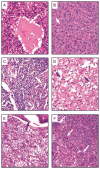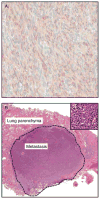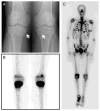Tumor-induced osteomalacia
- PMID: 21490240
- PMCID: PMC3433741
- DOI: 10.1530/ERC-11-0006
Tumor-induced osteomalacia
Abstract
Tumor-induced osteomalacia (TIO) is a rare and fascinating paraneoplastic syndrome in which patients present with bone pain, fractures, and muscle weakness. The cause is high blood levels of the recently identified phosphate and vitamin D-regulating hormone, fibroblast growth factor 23 (FGF23). In TIO, FGF23 is secreted by mesenchymal tumors that are usually benign, but are typically very small and difficult to locate. FGF23 acts primarily at the renal tubule and impairs phosphate reabsorption and 1α-hydroxylation of 25-hydroxyvitamin D, leading to hypophosphatemia and low levels of 1,25-dihydroxy vitamin D. A step-wise approach utilizing functional imaging (F-18 fluorodeoxyglucose positron emission tomography and octreotide scintigraphy) followed by anatomical imaging (computed tomography and/or magnetic resonance imaging), and, if needed, selective venous sampling with measurement of FGF23 is usually successful in locating the tumors. For tumors that cannot be located, medical treatment with phosphate supplements and active vitamin D (calcitriol or alphacalcidiol) is usually successful; however, the medical regimen can be cumbersome and associated with complications. This review summarizes the current understanding of the pathophysiology of the disease and provides guidance in evaluating and treating these patients. Novel imaging modalities and medical treatments, which hold promise for the future, are also reviewed.
Conflict of interest statement
The authors declare that there is no conflict of interest that could be perceived as prejudicing the impartiality of the research reported.
Figures








References
-
- Albright F, Reifenstein E. Parathyroid Glands & Metabolic Bone Disease. Vol. 3. Baltimore, MD, USA: The Williams & Wilkins Company; 1948. Clinical hyperparathyroidism; p. 56.
-
- Albright F, Butler AM, Bloomber E. Rickets resistant to vitamin D therapy. American Journal of Diseases of Children. 1937;54:529–547.
Publication types
MeSH terms
Substances
Supplementary concepts
Grants and funding
LinkOut - more resources
Full Text Sources

